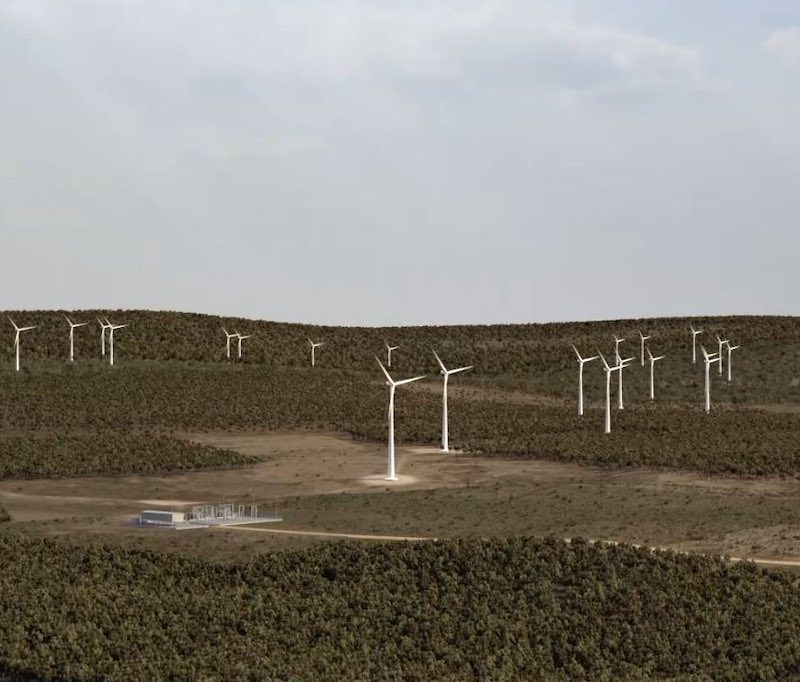Queensland, the Australian state with the biggest dependence on coal – around 72 per cent in the last 12 months – is getting ready to have no coal generation at all in little more than a decade, at least during daytime hours when solar and storage will dominate the grid.
The Sunshine State is emerging as a fascinating case of how to rapidly transform an elongated grid with significant amounts of major industry into what could potentially become a renewable energy powerhouse, delivering excess wind and solar to states to the south, and also to the green hydrogen industry.
It’s had a 50 per cent renewables target in place for some years now, but to date has only been able to advance that to around 23 per cent; although that share will jump when a couple of big projects under construction – including the country’s biggest wind project at MacIntyre (1GW), Clarke Creek (400MW) and Western Downs (400MW) – come on line.
It also has the youngest coal fleet in the country, so while South Australia has also dumped coal, and Victoria and NSW are expected to do so by the mid 2030s at the latest, if not in the next 10 years, Queensland will still have some plants operating – although their role will be vastly different to what they are today.
Paul Simshauser, the CEO of Powerlink, the state company which operates the main transmission backbone to the state grid, says the state currently has capacity for than 10GW of new renewable energy generation additions without the need for significant new investment. He says the state has been inundated with connection inquires since the government announced late last year it will up its renewables target to 70 per cent by 2032, and 80 per cent by 2035.
“It was like a giant starter gun went off. And we noticed an immediate rise in you know, in project, inquiries and applications,” Simshauser said in an interview with RenewEconomy’s weekly Energy Insiders podcast.
The size of the projects has also increased. “We’ve noticed … a real shift in the size of projects. So I can’t tell you how many projects sort of turned up saying 200 (megawatts) and are now, you know, sort of three, four, even five times that. That is what their starting point has become.”
Simshauser says that – despite the relatively slow increase in renewables to date – that he is confident the 50 per cent renewable energy target can be met well before 2030, likely even before 2028, given the scale of the projects he has seen in the pipeline.
And he says there is no doubt that the continuing influx of renewables, helped by the creation of several new renewable energy zones, will mean a dramatic change in the way the grid operates.
“Just to give you a snapshot of somewhere in the …early to mid 2030s, in the height of summer, if you can imagine this, you’ve got no coal plant operating whatsoever. It’s just all … solar, wind, batteries, both household and utility, and pumped hydro,” he says.
“When you sit back and look at what actually is flying around the power system …. (the modelling shows) just huge amounts. … (It’s becoming) an exercise of moving solar and wind through time and space, and in particular storing huge amounts of solar during the daytime, and unleashing it at night.
“So it’s a different way of thinking about the grid, you now need the grid, to be able to move solar and wind through time and space, rather than just focusing on how we meet peak demand.
“With a transmission network, we’re going to think about all the resources on the system and how, collectively, like a symphony orchestra, they’re going hit those high notes of optimisation that means they need to work a bit harder during the day to meet the nighttime peaks.”
Queensland, Simshauser says, will also play a critical role in the transition in other parts of the grid because of its rich wind resources, particularly in the north of the state, that are not correlated with NSW, which means the resource is strongest when the resource in NSW is not. That will require additional capacity to transport that power to where it is needed.
He says the current coal generation centres will become energy hubs of a different type. That transition is already evident with the announcement of a suite of big batteries to be built at the sites of current coal generators, and Simshauser envisages some old steam turbines being reduced to running in “synchronous mode” rather than burning coal for power.
“The government (which owns most of the state’s existing thermal assets and the network operators) has to be really thoughtful about how to manage that transition. And also with the incentive of an Olympics coming in 2032, the government’s pretty motivated to see renewables hit the ground.”
You can listen to the full interview with Powerlink’s Paul Simshauser in the latest episode of the Energy Insiders podcast. Please click here.










